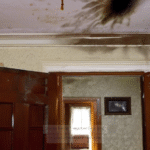What Compelling Evidence Exists for Bigfoot’s Existence and How Can It Be Interpreted?
What Compelling Evidence Exists for Bigfoot’s Existence and How Can It Be Interpreted?
The legend of Bigfoot has captivated the minds of millions, sparking intense debates and relentless investigations into its existence. This elusive creature, often described as a large, hairy humanoid, has been reported across North America and beyond. What adds to the enigma is the growing body of evidence purported to support its existence. This article aims to delve into the compelling evidence for Bigfoot, analyze its implications, and explore what this means for cryptozoology as a field.
Historical Context of Bigfoot Sightings
Bigfoot sightings date back centuries, with Indigenous peoples of North America recounting stories of a giant, ape-like creature known by various names, including Sasquatch. The term “Bigfoot” itself emerged in the late 1950s, with the first widely publicized sighting occurring in 1958 when construction workers in Bluff Creek, California, discovered large footprints. This event marked the modern era of Bigfoot mania, leading to a plethora of reported encounters, alleged footprints, and even video footage.
Historical documentation from various cultures suggests that the concept of Bigfoot-like creatures may be more universal. For example, the Yeti in the Himalayas and the Yowie in Australia share similar traits, suggesting a deep-rooted mystery that transcends geographical boundaries.
Core Evidence: Footprints and Casting Techniques
One of the most compelling pieces of evidence in the Bigfoot debate is the discovery of footprints. These prints, often measuring up to 24 inches long, have been cast using techniques that preserve their details. The most famous of these casts is the “Patterson-Gimlin film” from 1967, which allegedly shows a Bigfoot walking in the woods of Northern California. This film has been scrutinized and analyzed, with some experts claiming it to be authentic due to the detailed movement of the creature.
| Evidence Type | Description | Year |
|---|---|---|
| Footprint Casts | Large, human-like footprints found in various locations | 1958-Present |
| Patterson-Gimlin Film | Footage of a creature walking in Bluff Creek | 1967 |
| Hair Samples | Unexplained hair samples collected, often analyzed without conclusive results | Various |
Hair Samples and Genetic Studies
Another intriguing aspect of Bigfoot research involves hair samples collected from suspected Bigfoot habitats. In some cases, hair found in remote areas has been subjected to DNA analysis. While many samples have been identified as belonging to known animals, a handful remain unclassified. In a notable study, a hair sample from the Himalayas was analyzed and showed a genetic composition that did not match any known species, raising questions about its origin.
Notable Fact: The use of genetic sequencing technology has advanced in recent years, allowing researchers to analyze samples more accurately and uncover potential new species.
Audio Evidence: Howls and Vocalizations
Audio recordings claiming to capture Bigfoot’s vocalizations have emerged from various locations, particularly in the Pacific Northwest. These recordings often feature deep howls, grunts, or knocks, which some researchers argue are indicative of an unknown hominid. The authenticity of these sounds has been debated, but the persistence of such recordings highlights the ongoing fascination with Bigfoot and the mystery surrounding it.
Eyewitness Accounts and Their Significance
Eyewitness accounts play a crucial role in the Bigfoot phenomenon. From hunters to hikers, countless individuals have reported encounters with the creature. While skeptics highlight the potential for misidentification or psychological factors, proponents argue that consistent details across various accounts lend credence to the existence of Bigfoot. In particular, the consistency of descriptions, such as height, fur color, and behavior, suggests a common source for these experiences.
- Consistency: Many accounts describe a creature standing between 7 to 10 feet tall.
- Behavior: Reports often include descriptions of the creature’s elusive nature and its tendency to retreat when spotted.
- Geographical Patterns: Sightings are frequently reported in remote wilderness areas, suggesting a specific habitat preference.
Alternative Perspectives: Skepticism and Scientific Inquiry
While the evidence for Bigfoot’s existence is compelling, it is essential to consider alternative perspectives, particularly from the scientific community. Skeptics argue that the lack of irrefutable physical evidence, such as a body or conclusive photographic evidence, undermines the claims of Bigfoot advocates. They often point to the phenomenon of pareidolia, where the human brain interprets vague stimuli as familiar patterns, leading to misidentifications of animals or even inanimate objects as Bigfoot.
Additionally, environmental factors, such as the vastness of forests and the possibility of undiscovered species, are cited as reasons for the continued mystery. Many scientists advocate for a more rigorous approach to investigating these claims, emphasizing the need for controlled studies and ethical considerations in the search for cryptids.
Common Misconceptions About Bigfoot
Numerous misconceptions surround the Bigfoot phenomenon that can hinder understanding. One common myth is that Bigfoot is a solitary creature. While some reports support this idea, others suggest that they may travel in small family groups. Furthermore, the notion that all sightings are hoaxes overlooks the sincerity and reliability of many witnesses who have no apparent motive to deceive.
Warning: Be cautious of sensationalized media reports, as they can distort public perception of legitimate research and evidence.
Best Practices for Investigating Bigfoot Evidence
For those interested in investigating the Bigfoot phenomenon, it is crucial to approach the subject scientifically. Here are some best practices for aspiring researchers:
- Document sightings meticulously, including location, time, weather conditions, and details about the encounter.
- Utilize technology such as audio recorders and cameras to capture evidence.
- Engage with local communities and Indigenous peoples to learn about historical accounts and cultural significance.
- Consider collaborating with trained scientists or experts in wildlife biology to lend credibility to your findings.
Future Developments in Bigfoot Research
The future of Bigfoot research is promising, with advancements in technology paving the way for new discoveries. As genetic testing becomes more sophisticated, it may yield more conclusive results regarding unidentified hair samples. Similarly, the use of drones and remote cameras could facilitate more extensive surveying of remote areas where sightings are reported.
Moreover, the increasing acceptance of interdisciplinary approaches, combining anthropology, biology, and environmental science, may lead to new insights into the habitats and behaviors of cryptids like Bigfoot. Researchers are also advocating for the establishment of a formal research framework to study cryptids, which could foster collaboration and increase the rigor of investigations.
Conclusion
The question of Bigfoot’s existence continues to intrigue and inspire, drawing attention from both believers and skeptics alike. Compelling evidence, ranging from footprint casts to eyewitness accounts, fuels ongoing investigations and debates. While skepticism and scientific inquiry play essential roles in understanding this phenomenon, the possibility of undiscovered species living in remote areas keeps the spirit of exploration alive.
As we continue to explore the mysteries of the natural world, the search for Bigfoot reminds us that some questions may remain unanswered, inviting curiosity and encouraging a quest for knowledge that transcends the boundaries of conventional science. Whether one sees Bigfoot as a myth or a possible reality, the dialogue around this creature enriches our understanding of folklore, nature, and the human experience.
Other Articles
Recent Posts
- What Happened to Flight MH370? The Conspiracy Theories That Still Haunt Us
- What Secrets Lurk Within the Walls of the Infamous Trans-Allegheny Lunatic Asylum?
- What Evidence Supports the Existence of Bigfoot in the Pacific Northwest?
- What Happened to the Indus Valley Civilization? Unraveling the Mysteries of Ancient Urban Life
- Can Telepathy Be Scientifically Proven Through Laboratory Evidence?







